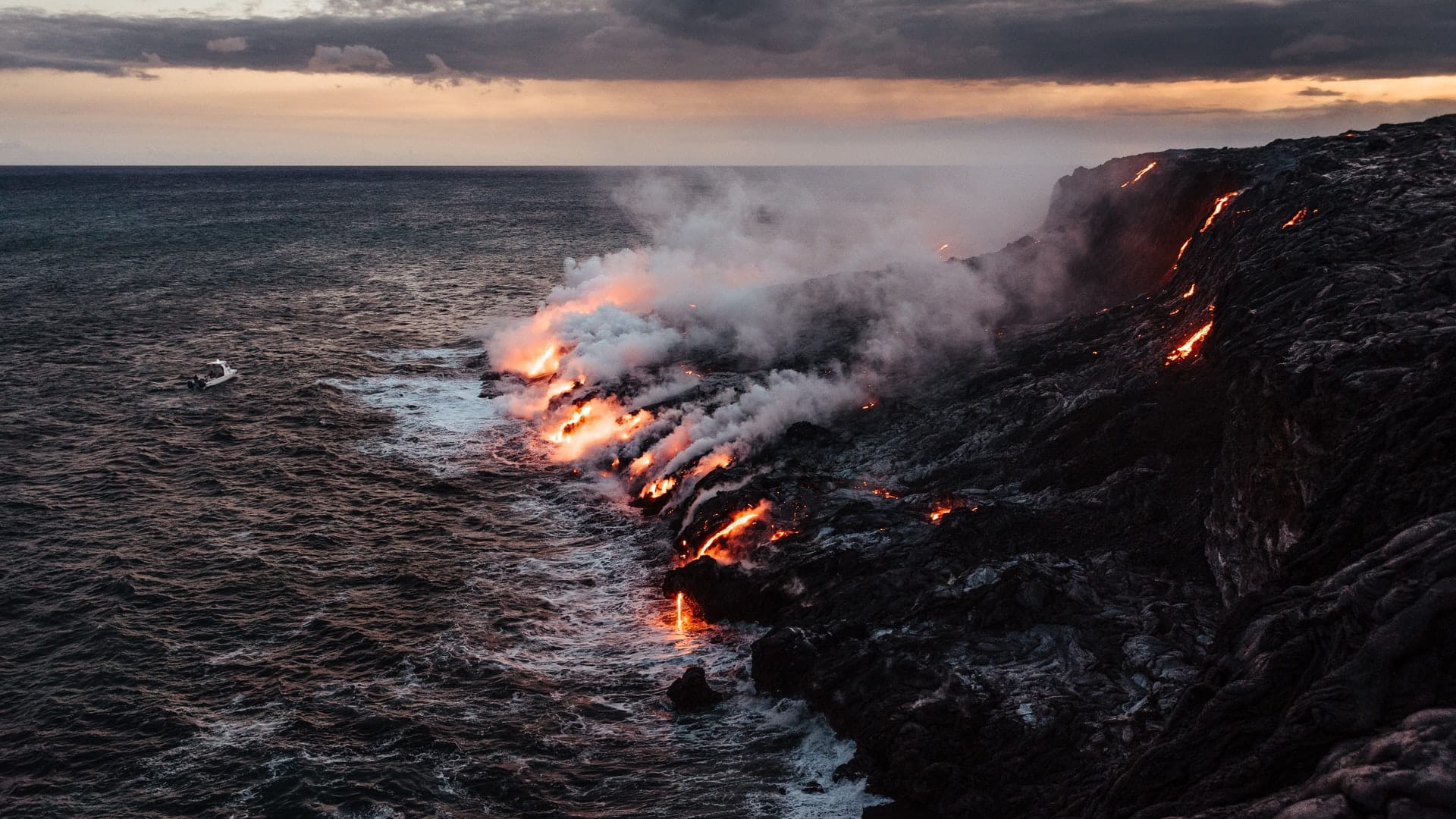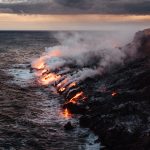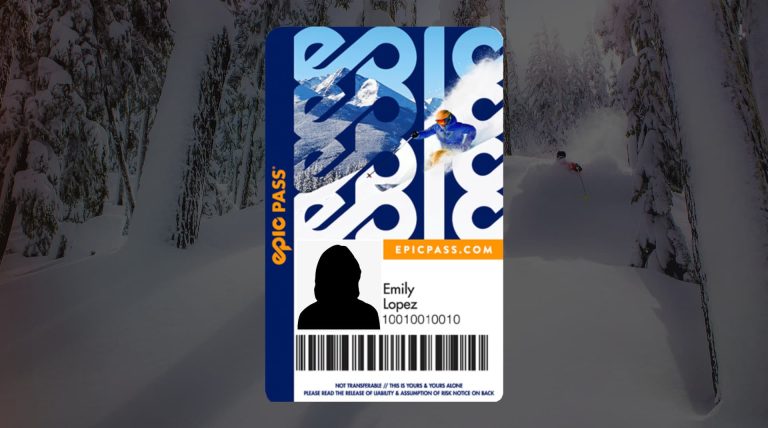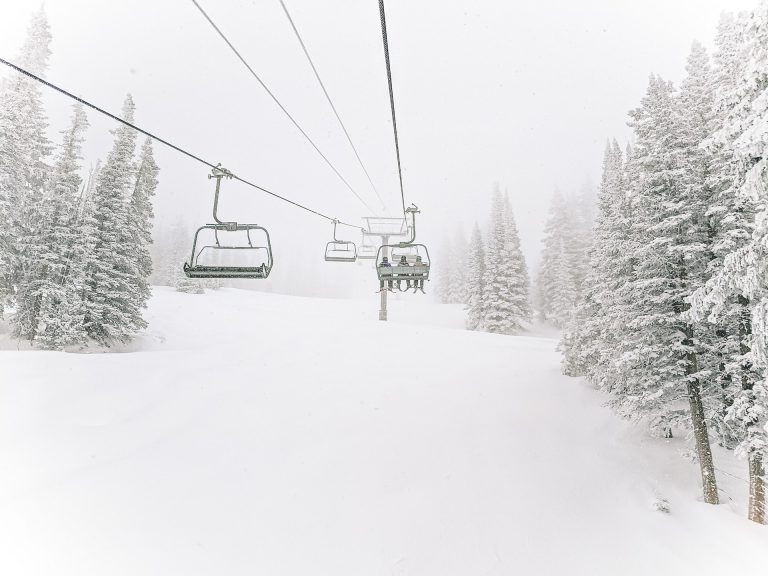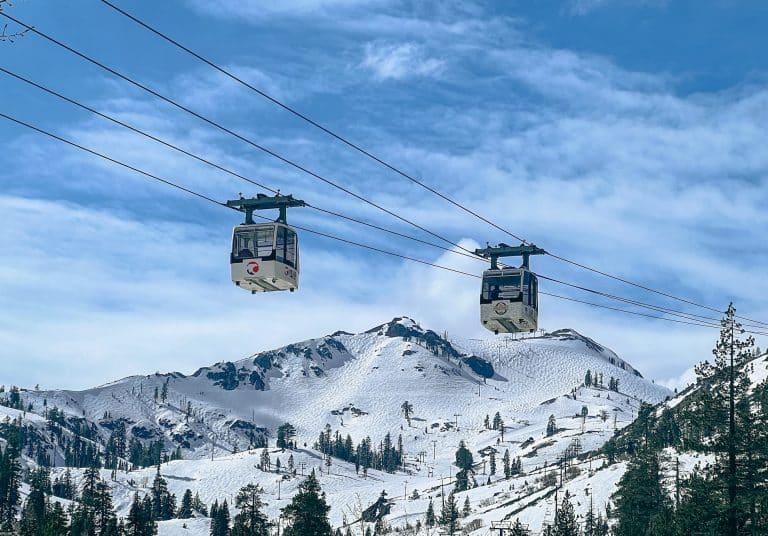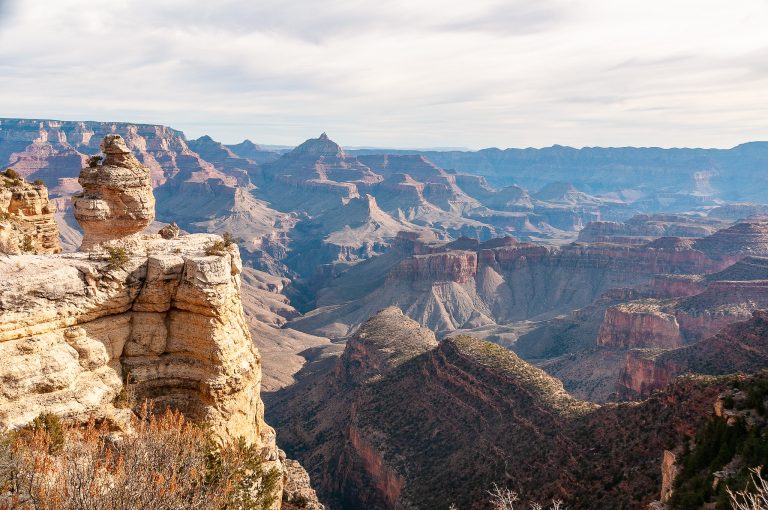10 Tips for Visiting Hawaii’s Volcanoes National Park
Visiting Hawaii Volcanoes National Park is a dream vacation for many. However, with such an expensive trip, comes the need to plan well in advance. There are simply so many unknowns when planning a trip that requires you to fly over 2,000 miles from the continental US.
We know planning a trip to see the volcanoes can be intimidating. You need to hear from people that have been here before, and done it all before. You want to see what only the locals know about, and most of all: you want to give yourself the best chance possible to have the vacation of a lifetime.
However, visiting the Hawaii volcanoes doesn’t have to be complicated. Your trip should include a day or two at the volcanoes, but there is so much more to see on the Big Island of Hawaii. Why not also go island hopping to also see Haleakalā National Park?
Here are our top ten tips to make your next trip to Hawaii the best trip ever!
1. Visit During Off-Peak Season

We are going to start off discussing what most people see as the most pressing issue with our National Park System: it’s overcrowding. The good thing here is that while Volcanoes National Park does have its peak- and off- seasons, it is never particularly crowded. It is the 21st most visited National Park in the US out of the 63 we currently have.
The best months to make a trip to Hawaii would be either in the winter (December-April), or late summer (August & September). Winter is peak tourist season in Hawaii.
2. See Lava Flows in the Dark
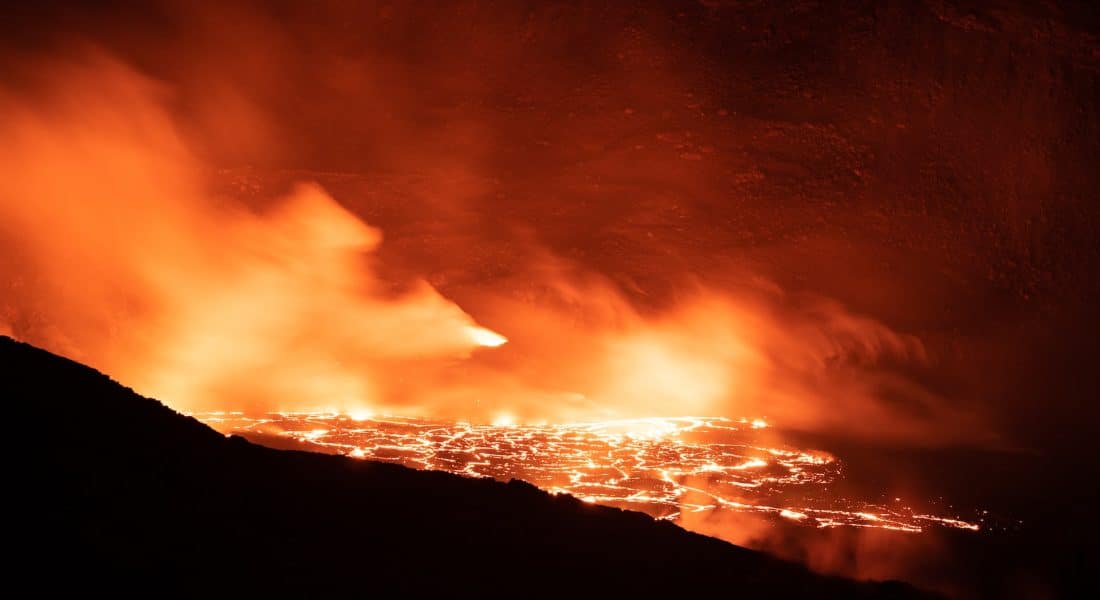
This photo showcases some of the crazy views you can get of the lava flows at night. Set against the dark night sky, the bright orange and red lava stands out and creates incredible views. You can then watch the lava get more and more vibrant as the sun sets and the sky darkens. This can be a busy time in the park, but don’t let that scare you away.
Plan to get into the park around dusk. Lava is best seen at night along the south rim of Crater Rim Drive, which is easily accessible from the eruption viewing area near Keanakākoʻi. The Devastation Trail from there will give you the best glimpses of lava after dark.
Come prepared as well! The nights get a little chilly at this elevation, so wear layers, regardless of the month you’re visiting in. Bring a good flashlight with you as well. Don’t rely on your phone’s flashlight, as it won’t be strong enough to safely get from your car and back.
3. Don’t Miss the Petroglyphs!
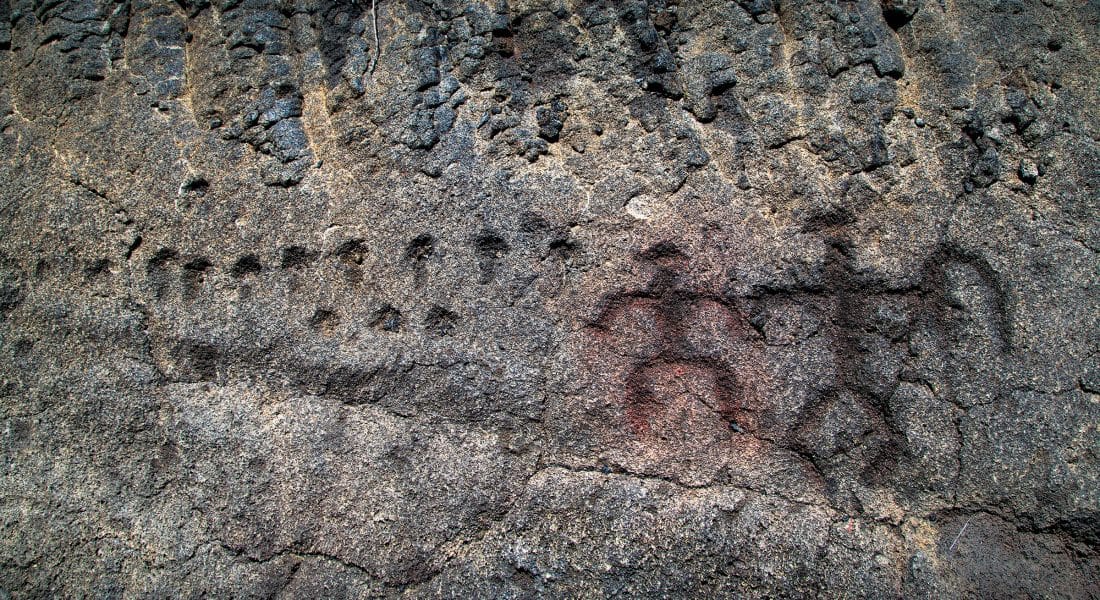
The Pu‘u Loa Petroglyphs are an archeological site with more than 23,000 petroglyph images etched into hardened lava.
Located on the southern flank of Kīlauea volcano, this site is accessible via a short (yet rugged) walk. Puʻuloa has a parking area pullout along Chain of Craters Road at milepost 16.5. From the parking area, the 0.7-mile walk takes you over a gently up-and-down lava bedrock trail to reach the boardwalk at Puʻuloa.
4. Consider Staying in the Park
Not only does the Volcano House have amazing views, gorgeous rooms, and award-winning dining options, but it also affords you the ability to see the Park at night after crowds thin out. You can even see the lava flows while eating at the Volcano House at night!
This is probably one park when staying inside the park will be well worth the cost. While Hilo has the most nearby hotel options available, it is still a 45-minute drive to and from the park. Walking around the park at night after most of the people have left will provide an experience that is entirely different from what you’ll have during the daytime.
5. Check for Recent Lava Flow Closures
The Hawaii Volcanoes Park is centered around Kilauea, an active volcano that has been continuously erupting since 1983. Because of this, always check the NPS page for closures before heading into the park. The last thing you want to do is to have your day upended by lava flows that prevent you from getting to where you intend to go. If you require any further assistance, the Visitors Center welcomes answering these questions as well. They can be reached at 808-985-6011.
6. Visit Pu’uhona O Honaunau National Historical Park at Sunset
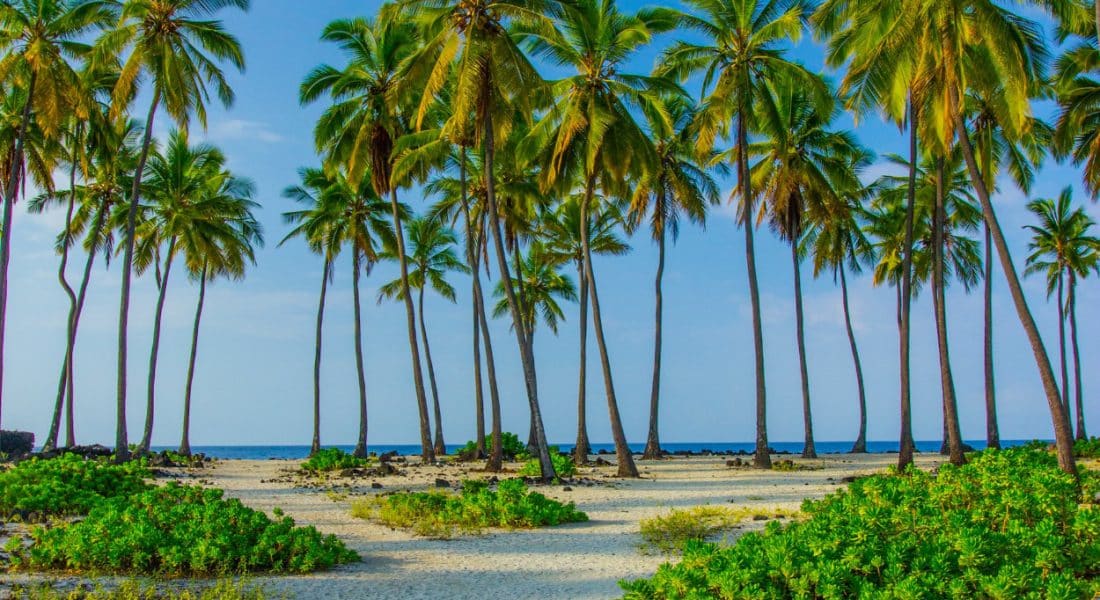
Puʻuhonua o Hōnaunau (translation: Place of Refuge) is one of Hawaiʻi’s most sacred historic places. Located on the west coast of the Big island near the town of Hōnaunau, this 180-acre refuge is known for its value to the ancient Hawaiian people. There is a self-guided tour at this park, which is away from the hustle-bustle of the more popular parts of the island.
At dusk, make your way to ‘Ilio Point south of the park (GPS: 19.420168, -155.9126673) for the best sunset viewing spot.
7. Feeling Adventurous? Try Snorkeling
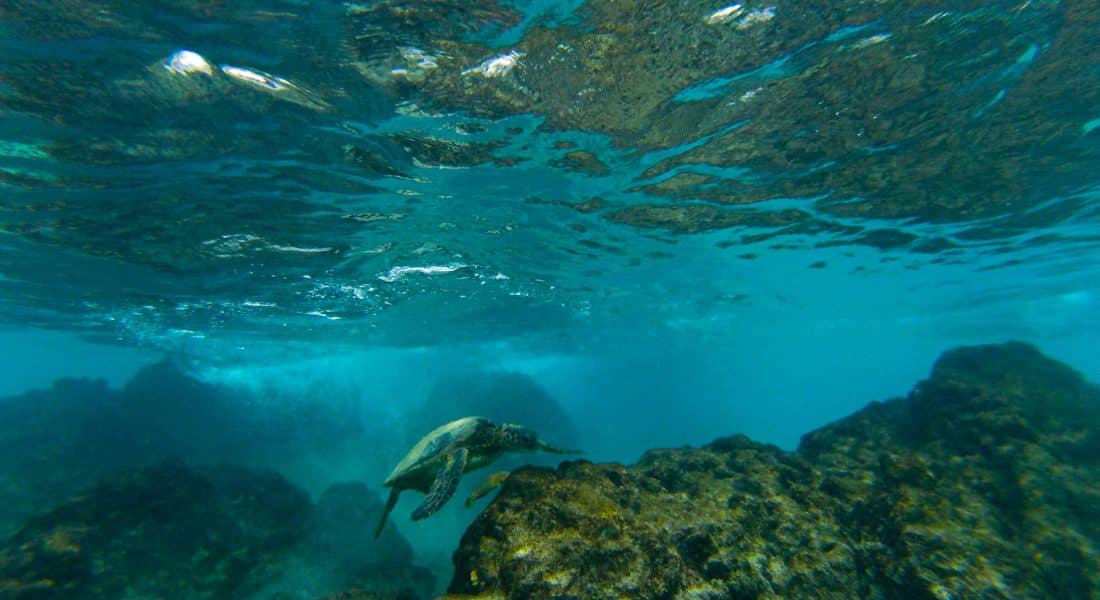
Snorkeling is a great way to see parts of the island that you otherwise can’t from just walking around. There are two ways to snorkel here. The first way is via a paid tour, which costs between $100-$150 per person. Our favorite is the nighttime snorkeling with manta rays.
The other way is to do it yourself. The Two Steps location inside the Puʻuhonua o Hōnaunau National Historic Site is renowned for its snorkeling. The access to the bay is fairly easy, but the spot does fill up if you aren’t there early enough. There is no beach at Two Steps, so you need to access the water by going over the lava rocks. There is no place to rent snorkel equipment at Two Steps, so be sure to stop at one of the many establishments along the way into the park first.
The Captain James Cook Monument located on the western coast of the Big Island is another hot spot for snorkelers. Located inside a state park, this area is known for its crystal clear waters and bountiful marine life that can be seen in the water.
8. Island Hopping is Possible
Did you know that there are airlines that are dedicated to taking you from one island to another in Hawaii?
Hawaiian Airlines is the place to book most of these flights, and most are surprisingly cheap. The flight is pretty short too, with only about 30 minutes in the air.
While Hawaiian Airlines is the most notable airline, there are a few others like Mokulele and Southwest that also service the islands. Flight times around the islands are typically short and well under an hour. Some only take 10 minutes or so! They can cost anywhere from $30 one way, to a couple hundred dollars for a round trip flight.
9. The Weather is Steady, But Not as Warm as You Think
The average high temperature in Hawaii Volcanoes National Park is between 70-80 °F no matter the month. July, August, and September are the hottest months, but only by a few degrees.
Max temperatures barely reach above 82°F in the park. However, the nights can get surprisingly cold. Nighttime lows dip into the mid 60s, and even hit the 40s during the winter months (January & February).
It should be noted that as you climb in elevation, the weather will increasingly become colder. The top of the park reaches over 4,000 feet (1.2 km) in elevation!
10. One (Full) Day is All You Need
Most visitors to Hawaii Volcanoes National Park need only one full day to see it all. This may be surprising at first, but it makes sense. Take in the various sights and hikes around the Crater Rim Drive during the day, and stay for the lava flows at night. Hawaii has so much more to offer – even some of the spots we shared above weren’t even in the actual park!
Hawaii is a magical place to visit, and you will be able to find plenty of other things to see on your trip to the Big Island.
